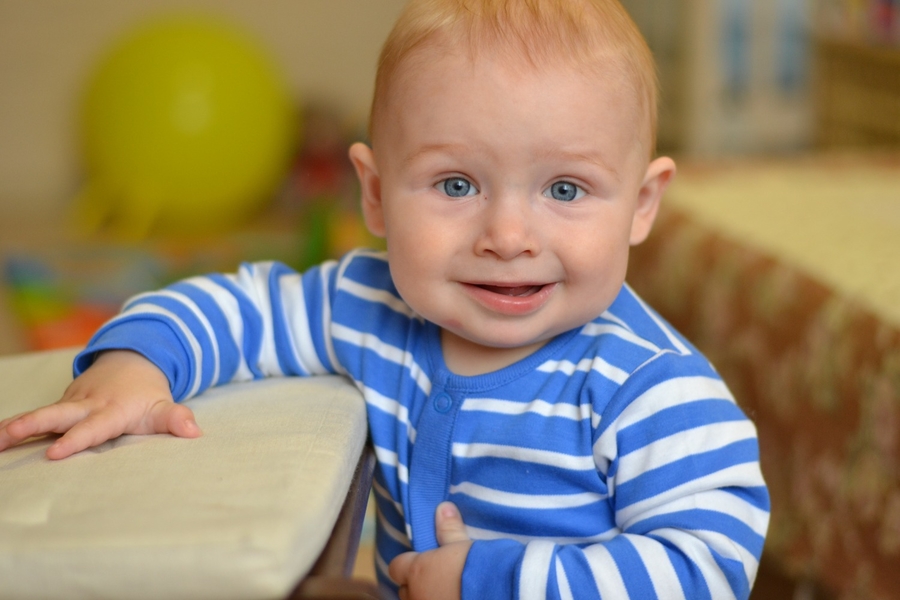
Developmental Needs Of Toddlers
23 Jan 2018 | 4 min Read
Babychakra
Author | 1369 Articles
Early childhood development is vital for a healthy adult life.
The period that follows after the first birthday plays an crucial role in the development of your child. The baby starts developing self-identity, exploring the surrounding environment and attempts to become independent. Your baby enters the toddler stage at 1 year lasting upto 3 years. Growth and development of toddler involves physical growth of body, expansion of reasoning and thought process and development of emotional and social skills of the child.
First three years of child development, i.e. 12 to 36 months are called as the formative years of childhood as the progress occurring during this period lays the foundation for future life.
Significance of developmental milestones in a toddler
Understanding toddler stages of growth and development aids in predicting the upcoming developments in child growth. Early detection increases the chances of correcting the developmental delays using appropriate measures.
A normal pattern of toddler development also indicates good nutrition and proper care of the child.
Toddler growth stages
1. Physical growth of a toddler
- Your baby should be able to stand alone without support by 1 year and learn to walk by 15 months.
- The toddler can walk backwards and climbs up steps with help up to 18 months.
- At 24 months, the toddler can jump by himself/herself in one place.
- By 3 years, the kid rides a tricycle and can kick a ball.Co-ordination of small muscles in hands and fingers in a 2-year-old toddler results in fine movements such as using a spoon, drawing a circle, building a block tower, etc.
- The child starts using hands and fingers better around 15 to 18 months of age.
- The kid should be able to scribble on a paper by holding a pencil or pen in the fingers.
- A 2-year-old toddler is able to eat food by himself/herself due to fine movements of the hand and fingers.
2. Language development in early childhood is an important milestone in toddler growth.
- The child learns to use 2 to 3 meaningful words (mama, dada, etc.) by 15 months of age. By this age, the toddler also responds when called by name.
- Up to 16 months of age, they understand commands like ‘come here’, ‘bring the toy’, etc.
- At 24 months, language development consists of combining two meaningful words for communication (e.g. no milk, my bed, etc.).
- A 2-year-old toddler should identify and name the items around them, and objects like animals, fruits, vegetables, etc. in the pictures or flash cards.
- At this age, the child is also able to name the body parts that are pointed out to him/her.
- Development of self-identification begins at 3 years. A 36-month-old toddler should identify his/her gender and age.
3. Cognitive development in toddlers (understanding and reasoning):
By 2 years, the toddler tries to undress himself/herself and pays attention to picture stories.
- The child likes playing simple and pretend-games (playing the role of a doctor, teacher, etc.), sorting objects according to color and shape, etc.
- A 3-year-toddler is able to solve 3 to 4 piece puzzle.

4. A toddler is curious to learn and explore everything that is seen in her/his surrounding environment. He/she may get upset or angry during the learning process, which is a typical 18 month old behavior. An angry toddler also shows temper tantrums, screams, cries, or hold breaths.
5. Child social development stages include pointing to the object he/she needs by 15 months of age. An 18-month-old toddler learns to understand difficult situations and demands help to overcome them. The toddler understands that he/she needs to take turns while playing among kids. A 2-year-old child can express his/her food choice.
Variations in toddler growth and development
Growth stages vary to some extent among kids in the toddler age group. Slight variations to a certain extent, like delayed or previous to expected age developments are considered normal. However, delays crossing grace-limit of the developmental phase require medical attention. Maintaining a toddler development chart or toddler development checklist along with regular doctor visits is useful in detecting a delay or abnormality in the development of a toddler.
The child is prone to frequent injuries during the toddler stage while exploring the surrounding environment. Adequate care and safety of your child is important to avoid preventable accidents.
Disclaimer: The information in the article is not intended or implied to be a substitute for professional medical advice, diagnosis or treatment. Always seek the advice of your doctor.
Also read: How does hearing many languages affect your child’s speech development?
A


Related Topics for you
Suggestions offered by doctors on BabyChakra are of advisory nature i.e., for educational and informational purposes only. Content posted on, created for, or compiled by BabyChakra is not intended or designed to replace your doctor's independent judgment about any symptom, condition, or the appropriateness or risks of a procedure or treatment for a given person.
